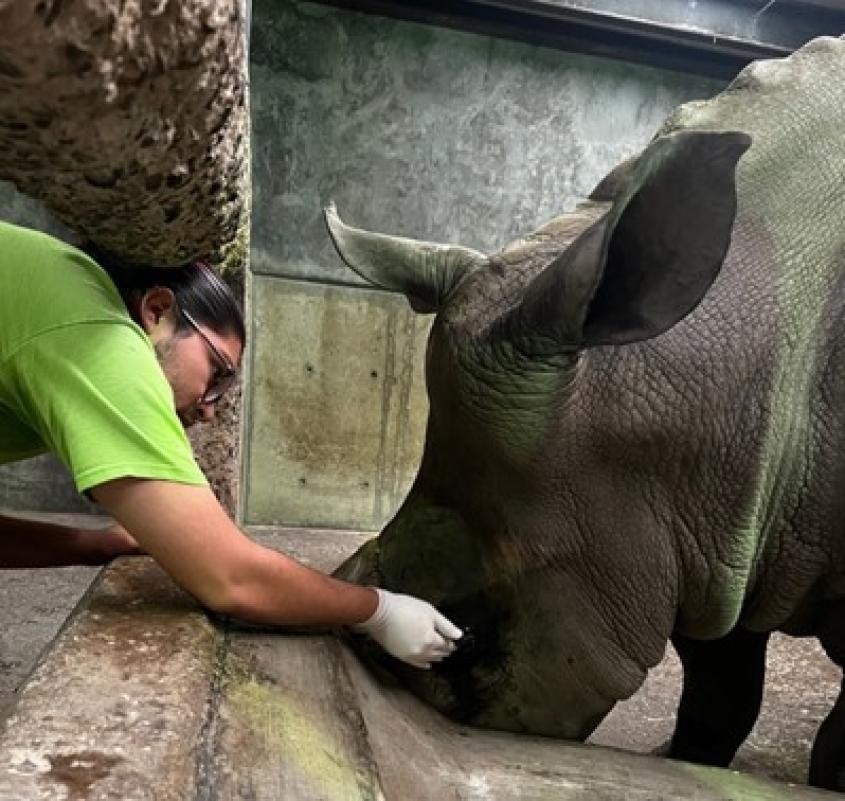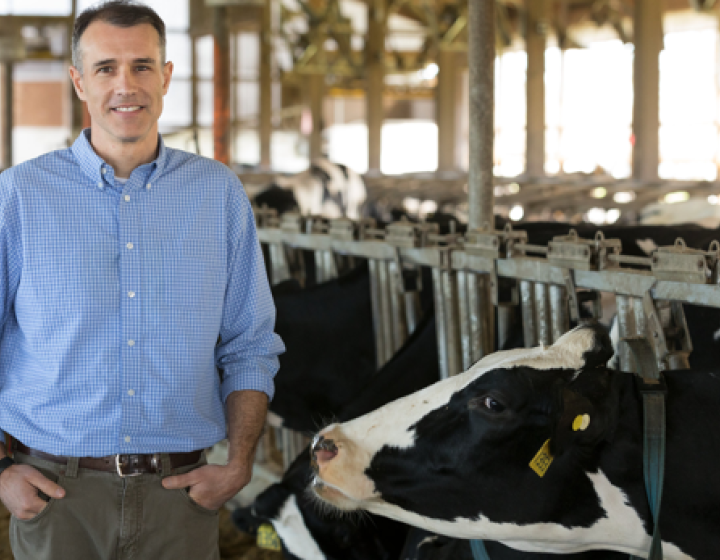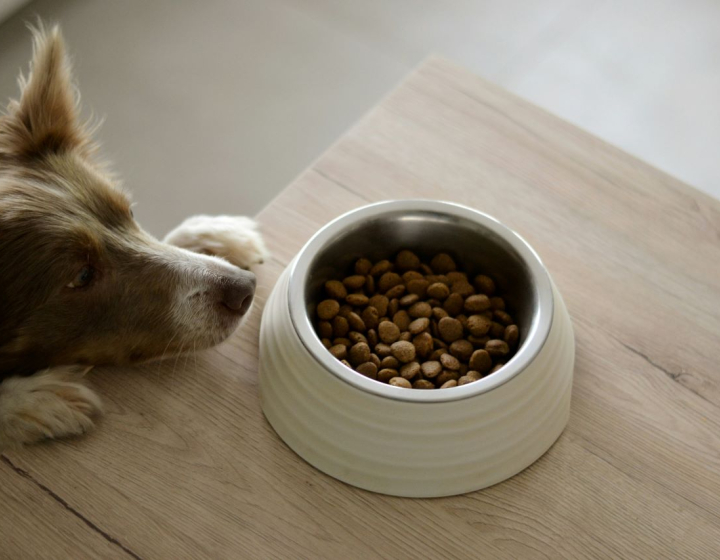Student blog: Expanding my horizons at Zoológico Guadalajara
In May of 2023, I traveled to Guadalajara, Jalisco in Mexico for ten weeks to work at the Zoológico Guadalajara. Home to over 3,500 animals from over 300 different species and built on a reserve at the edge of the Huentitan Canyon, Zoológico Guadalajara is one of the largest zoos in all of Latin America. My motivation for undertaking this project through the Cornell University College of Veterinary Medicine's (CVM’s) Expanding Horizons Educational Program stems from a desire to explore and connect with my Mexican heritage while also seeking to accomplish a range of professional objectives. As an aspiring veterinarian with a keen interest in zoological and conservation medicine, I viewed this opportunity as a gateway to invaluable clinical experience. Working closely with diverse wildlife species at the zoo offered a chance to deepen my understanding of the intricacies of animal health. As my first time working with wildlife, this immersive veterinary experience in Guadalajara represented a crucial step in confirming my dedication to specializing in zoological medicine, as I aim to contribute to the well-being and preservation of animals on a global scale.
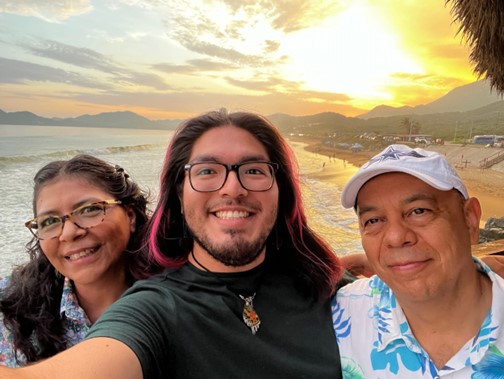
My journey commenced with my arrival at the airport in Guadalajara where I was greeted by my aunt and uncle, Norma and Abelardo, who I was meeting for the very first time. Any and all anxiety about my travels swiftly dissipated as their warm smile and heartfelt embrace instantly made me feel at home, setting the tone for a profoundly positive and unforgettable experience during my stay in Mexico. My ten weeks spent in the animal hospital brought a new and diverse set of tasks that kept me engaged and constantly learning. I worked with the veterinary staff at the zoo, assisting with tasks in the hospital and the field. My responsibilities included meal preparation, enrichment planning, and medication management that deepened my understanding of animal welfare.
Getting to know the zoo
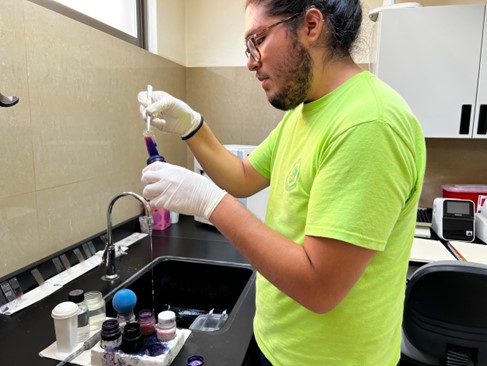
The diversity of animals I encountered was astonishing. By the end of one day, I had worked with over ten different species, including Antarctic penguins, African white rhinoceroses, Sika deer, Golden-handed tamarins, and a blue-and-gold macaw. One of my favorite animals at the zoo was Molly the cockatoo, who accompanied me on my morning routine of caring for the hospital patients – whistling with me as I went about my day.
I quickly became recognized both by the zoo staff as well as the animals. Many of the carnivores, like the Mexican Gray wolves and hyenas, began to follow my movements when I passed by, hoping I’d brought enrichment items like blocks of ice with meat inside for them to cool off during the hot summer afternoons. I also became a familiar face for the rhinos, Mayte and Axel, as I visited them twice a day to help with medical treatments. Mayte was one of the most interesting medical cases I encountered at the zoo, a rhino with allergic conjunctivitis. From working with Mayte, I learned about the medical management of chronic diseases, wound cleaning, medication administration, blood draws on megafauna, and analysis of eye swabs under the microscope due to the extensive observation of her condition by zoo veterinary staff and veterinary specialists.
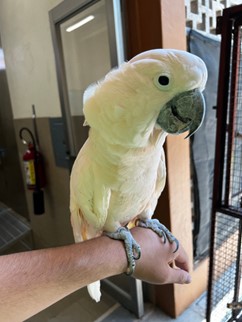
During the final weeks, I worked predominantly in the laboratory within the animal hospital, driven by my interest in the diagnostic aspects of veterinary medicine. Here, I delved into the microscopic intricacies of how various species functioned on a cellular and molecular level. With the help of staff veterinarian Dr. Andrea Saucedo, I learned about many diagnostic methods and gained experience in different staining techniques, parasite identification and evaluating blood morphology. I also had the opportunity to teach young children touring the animal hospital about the importance of preventative medicine within the zoo and its relation to zoonotic diseases that affect humans and animals alike. Seeing kids fascinated by the wonders of wildlife reminded me of the place I once stood when embarking on my journey into the world of veterinary medicine.
Reconnections and revelations
Outside of my veterinary experience at the zoo, I reconnected with my Mexican heritage by visiting family members, some that I hadn’t seen in almost a decade and others that I had never even met before. I also explored historical sites, marveled at the breathtaking Huentitan Canyon, and enjoyed mouthwatering Mexican cuisine, trying new meals whenever I had the chance.
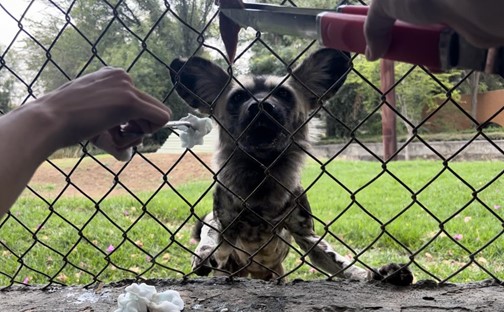
This experience was not only a professional journey but also a profoundly emotional and transformative one for me. It marked the first time I had the privilege of encountering veterinarians who shared my cultural background, a fact that held immense significance for me.
Throughout my upbringing, the scarcity of veterinarians who looked like me often led me to question my place and dedication within the field. However, my time in Mexico was a revelation – every veterinarian at the zoo reflected my own culture, and their pride in it was evident. This experience not only filled me with a sense of belonging but also instilled a renewed confidence in my aspirations. Engaging with fellow veterinarians who shared my heritage allowed me to embrace and celebrate my identity in ways I never had before.
Working side by side with these colleagues, I absorbed aspects of my culture and language that enriched my experience beyond the professional realm. Furthermore, my time in Mexico also offered the opportunity to reconnect with family members I hadn't seen in years or had never met before. The warm embrace of relatives, who welcomed me with open arms and shared stories about our heritage and history, added a deeply personal layer to my journey. Learning about my family's past, even parts my parents didn’t even know, and understanding my roots became an unexpectedly treasured part of this experience.
A transformative journey
In essence, my time in Mexico transcended the confines of professional growth and academic learning. It was a profoundly emotional voyage that rekindled my sense of purpose, cultural pride and familial connection. This experience not only confirmed my dedication to veterinary medicine but also solidified my understanding of the profound impact that cultural representation and familial bonds can have on shaping one's journey.
It was bittersweet to part ways with both colleagues and animals that I had grown fond of throughout my ten week stay. However, I am glad to have left with a wealth of knowledge about zoological medicine and Mexican culture. I would like to express my gratitude towards Cornell’s Expanding Horizons Program, Dean’s Leaders Program, and Einaudi Center as well as Zoológico Guadalajara for their support in this transformative journey of exploration, personal growth and professional advancement.

Sergio Acuna Gutierrez is a veterinary student in the Class of 2026. Acuna is interested in zoological and conservation medicine, which stems from a deep fascination with the beauty behind the unique and diverse world of wildlife. He aims to contribute to the health, well-being and conservation of wildlife and their natural habitats.



